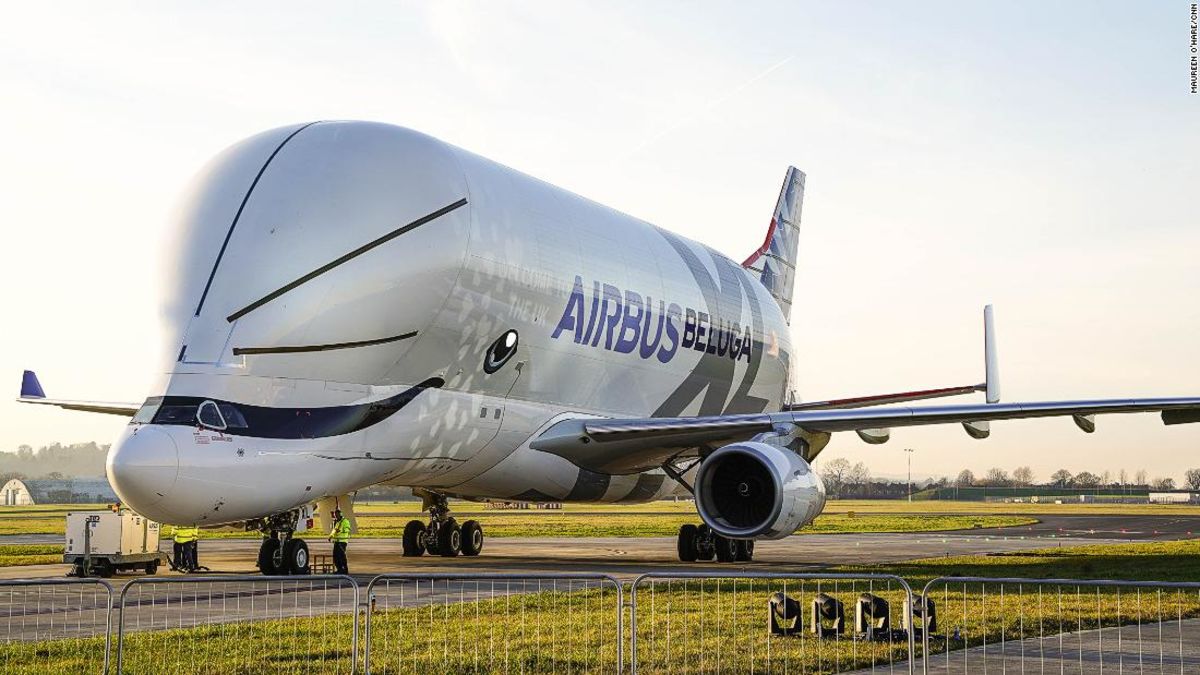Beluga XL spreads its wings at long last

(CNN) — It’s almost here. One of the aviation world’s most hotly anticipated planes, the Airbus Beluga XL, has just completed a key round of testing at Hawarden Airport in Wales, ahead of entering service later this year. At a time when jumbo passenger airliners such as the Airbus A380 and Boeing 747 are on their way out, the Beluga XL — the first of five — will be one of the biggest beasts in the skies. You won’t be able to travel in it, though. This is a super-transporter cargo plane, designed by Airbus to fly its aircraft components between European production sites and its final assembly lines in Toulouse, Hamburg and Tianjin. Modified A330The Beluga XL is the successor to the Beluga, or Airbus A300-600ST, which has been in operation since 1995. Starting with an A330 airliner, Airbus engineers lowered the flight deck and grafted a huge cargo bay onto the fuselage to create this unusually shaped plane.Through an upward-opening forward hatch on the “bubble,” completed aircraft wings, fuselage sections and other components easily slide in and out.The XL’s bubble is six meters longer and one meter wider than the original, meaning its cross-section is a whopping eight meters wide. Putting the ‘fun’ in functionalThe plane’s distinctive bulbous shape has earned it the nickname “the flying whale,” due to its strong resemblance to the white-colored Arctic-dwelling mammal, the beluga. The XL’s twinkly-eyed, smiling-faced livery capitalizes on this. The whimsical design was chosen by Airbus staff following a poll in which 20,000 employees were given six options and asked to choose their favorite. With 40% of the vote, it was the clear winner.”We used to say that in Toulouse or in Hamburg, the kids recognize the Beluga,” Bertrand Grosse, head of the Beluga XL program, tells CNN Travel. “They love this very special plane.” However, the design is functional as well as cute. The enormous cargo bay is large enough to carry two A350 wings at a time (the old Beluga could transport only one), and the whale-like nose improves the craft’s aerodynamic efficiency. Nature, after all, perfected the beluga whale and, explains Grosse, “flying in the air is a little bit like swimming in the sea.” Pilot trainingSo how does one go about steering a machine like this through the skies? Well, says Grosse, despite the plane’s unusual appearance, “for the pilots this is really an A330. Our pilots will be trained on the A330 and then they will get a Delta qualification to enable them to fly the Beluga XL.” While you might think the aircraft would run slower, “the drag is about the same,” says Grosse. “What changes really is the behavior of the aircraft at the rear, at the bottom of the cargo bay. “This is why we have lifted the vertical tail plane by more than two meters to get it out of the flow behind the cargo bay and we have also the special acceleration on the horizontal tail plane to give stability to the aircraft.” The Beluga XL is powered by two Rolls-Royce Trent 700 engines, which, as with its wings, are also used on the A330. Preparations for a very special guestAirbus manufactures its wings in a large factory at Hawarden Airport. The facility has undergone special modifications for the arrival of the Beluga XL, such as creating two sets of doors for the Beluga Line Station — one to fit the Beluga and one to fit the Beluga XL. Airbus also resurfaced the landing strip, erected blast fences (to safely redirect the engines’ high-energy exhaust) and installed new turn pads — necessary for when the Beluga XL turns around on Howarden’s relatively short runway of around 1,600 meters. Plane-lovers from across the UK gathered in Wales to see the arrival of the Beluga XL on Thursday, and again to see it depart for Toulouse, France, on Saturday. “This plane is, I would say, iconic for our company,” Grosse tells CNN Travel. “This is the workhorse for Airbus. So it is more than a plane. It is what enables Airbus to build aircraft every day.”Tamara Hardingham-Gill and Howard Slutsken contributed to this report.






